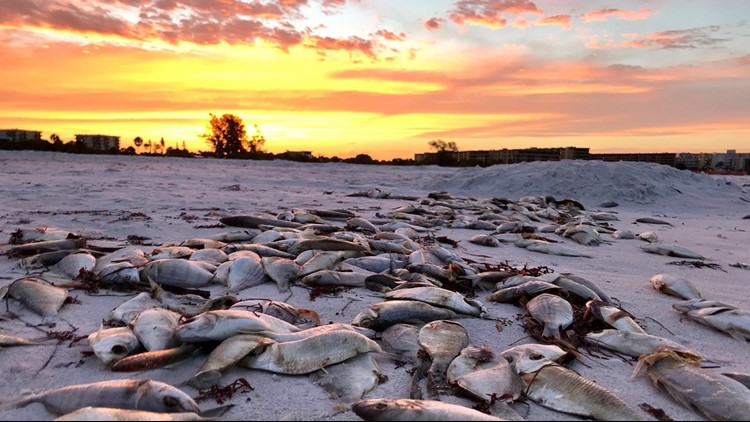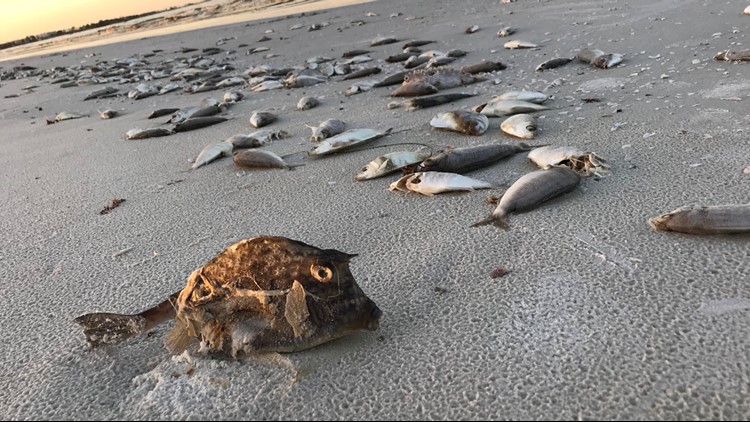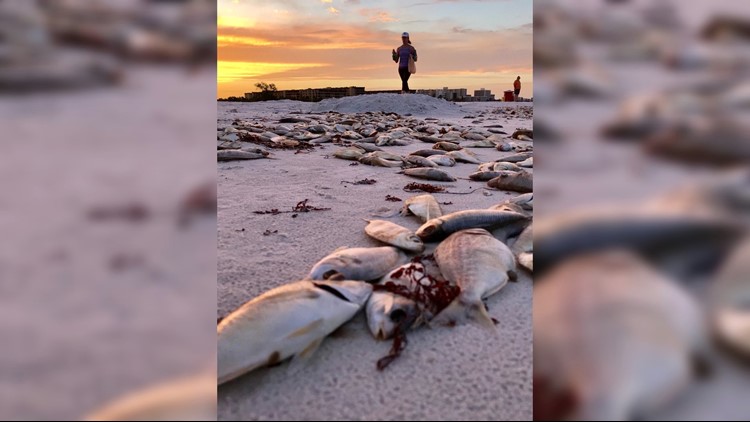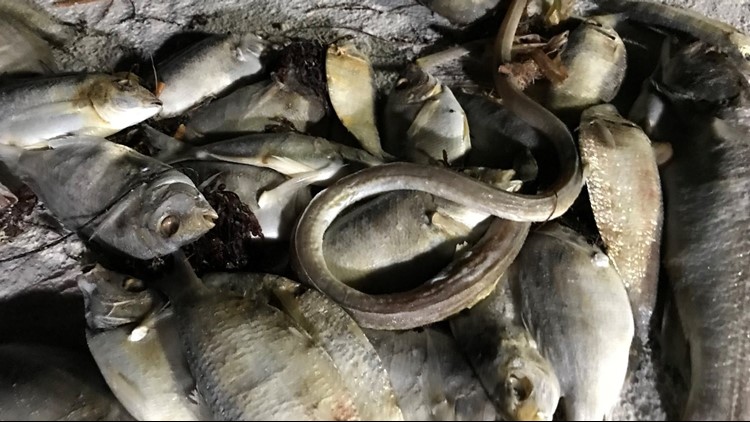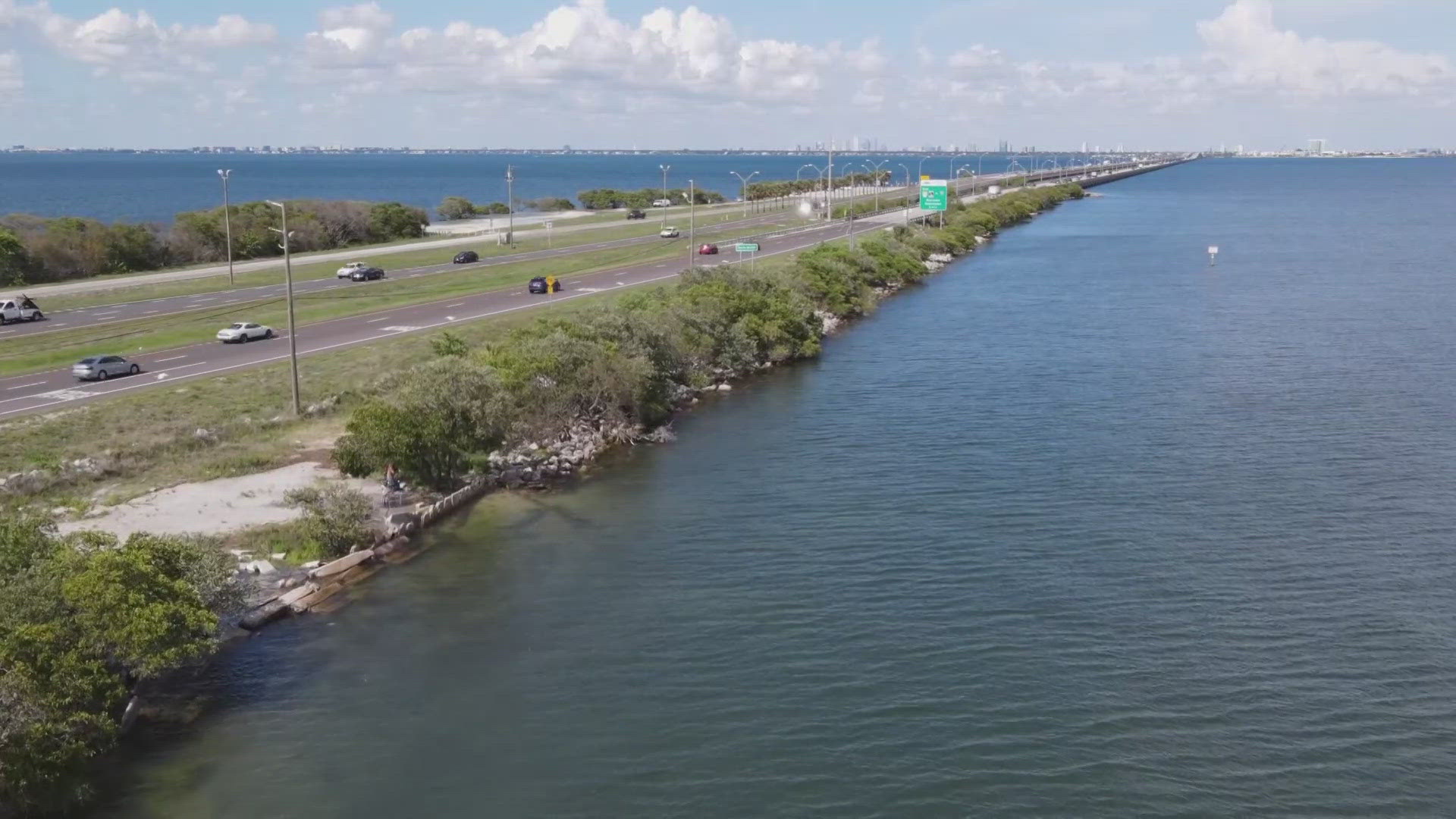SIESTA KEY, Fla. -- Despite consistently being ranked one of the top beaches in the country, fish and eel likely killed by red tide have pushed tourists away from the area.
"It's certainly disgusting," said Amy Benton, who walked along the shoreline early Thursday with a scarf over her nose and mouth as protection. "I am on vacation, so I'm trying to make the most out of it."
Crews came out with a fish disposal truck to clean the smelly marine life from the beach, and by 8:30 a.m., most had been removed. However, the red tide levels make much of the Gulf coast unsafe for swimming at the time.
Photos: Thousands of dead fish, eel wash up on Siesta Key Beach as red tide crisis continues
Red tide, which refers to higher than normal algae blooms of the organism Karenia brevis, happens almost annually and has been a natural occurrence for centuries. The bloom can grow or dissipate based on nutrients in the water, as well as the speed and direction of water currents and wind speeds.
Frequent, strong weather systems can help to break up the bloom.
Experts suggest an excess amount of nutrients, coming from inland Florida and dumping into the Gulf of Mexico from rivers, could be making this year's bloom more persistent. However, there has yet to be a firm link established between nutrient pollution and the severity of red tide, according to Mote Marine Laboratory and Aquarium.
The latest red tide report from the Florida Fish and Wildlife Conservation Commission shows high concentrations in samples collected from Sarasota County southward, meeting the threshold of at least 1 million Karenia brevis cells per liter of water.

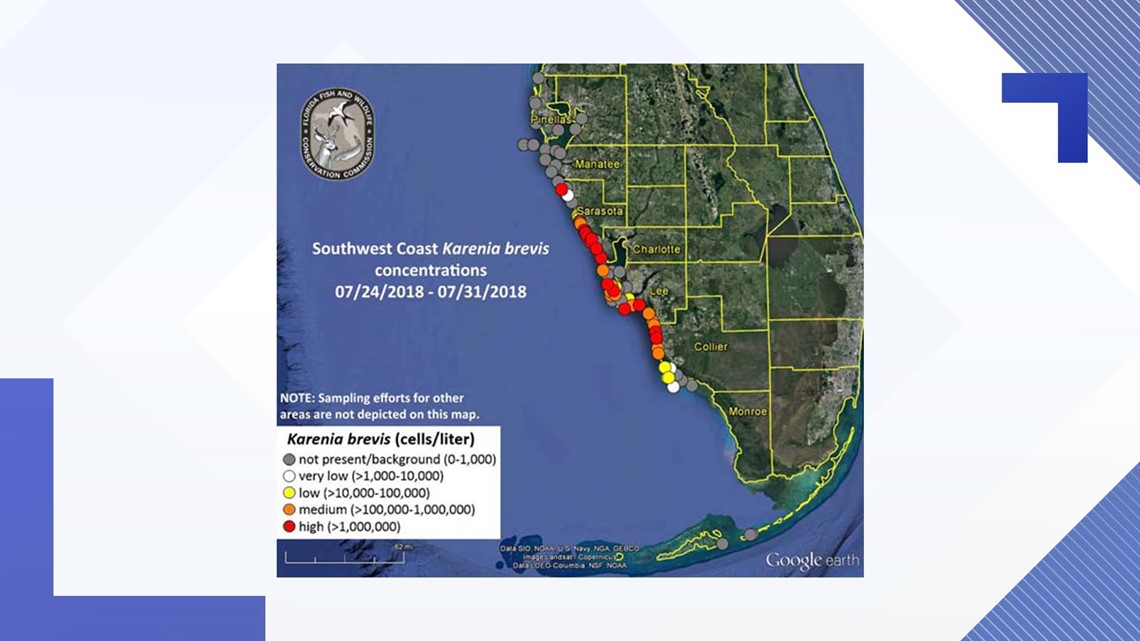
The excess amount of algae absorbs much of the oxygen in the water, killing off marine life beneath the surface. It's toxic, too: Reports of red tide first were reported in November 2017, and at least 400 stranded and dead sea turtles have been pulled from Lee, Collier, Charlotte and Sarasota county waters since, according to the Naples News-Press.
A manatee was found dead, likely due to red tide, on Tuesday in Cape Coral.
Kills can occur at thresholds of at least 10,000 cells per liter.
To humans, breathing in air containing the toxic algae can cause people to suffer from tearing eyes and frequent coughing and sneezing.
►Make it easy to keep up-to-date with more stories like this. Download the 10 News app now.
Have a news tip? Email tips@wtsp.com, visit our Facebook page or Twitter feed.


